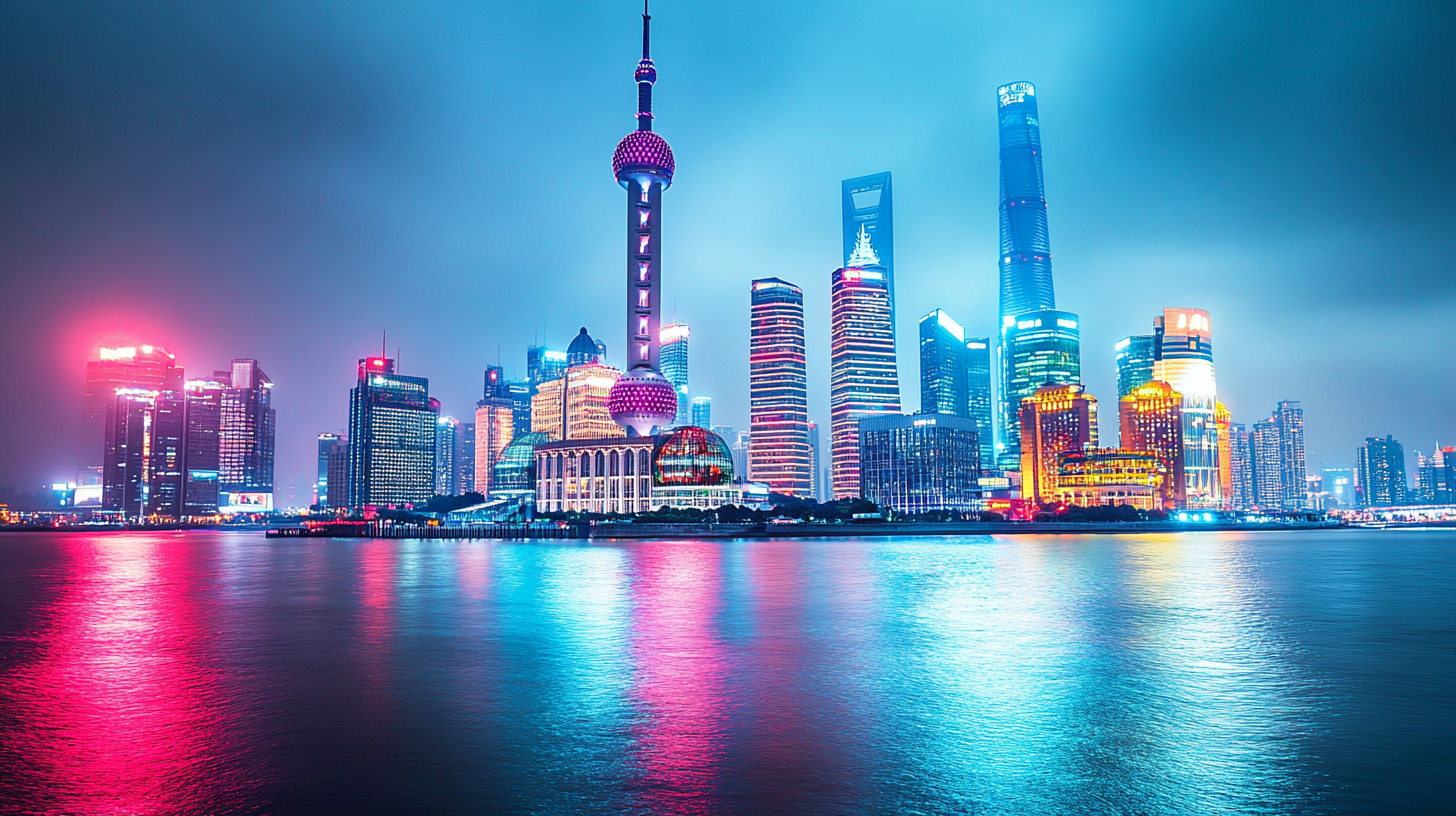How China's Manufacturing Thrives Amidst US-China Tariff Challenges: The Rise of Best Lighting Solutions
In recent years, the escalating trade tensions between the United States and China have led to a series of tariffs that significantly impact various industries. However, the Chinese manufacturing sector, particularly in the realm of Lighting Solutions, continues to thrive in this challenging environment. According to a report by Research and Markets, the global lighting market is expected to reach over $150 billion by 2027, with a substantial contribution from China's innovative manufacturers. Despite the tariffs imposed, China has seen a remarkable growth rate in its manufacturing output, with industries adapting quickly to maintain competitiveness. This resilience is particularly evident in the Lighting Solutions sector, where companies are leveraging advanced technologies and sustainable practices to meet international demand. As we explore the factors driving this growth, it becomes clear that China's ability to overcome tariff challenges speaks volumes about its manufacturing industry's agility and innovation.

The Impact of US-China Tariffs on Global Manufacturing Trends
The ongoing US-China trade tensions have generated significant ripples in global manufacturing trends, with tariffs reshaping the competitive landscape. As the US imposes tariffs on a myriad of Chinese goods, manufacturers are re-evaluating their supply chains and production strategies. Companies are increasingly looking for ways to mitigate costs while maintaining product quality, leading to a rise in innovative manufacturing solutions. For instance, many Chinese manufacturers are investing in automation and technology to enhance efficiency and reduce dependency on manual labor, thus offsetting some of the financial burdens imposed by tariffs.
Importantly, the tariff challenges have also spurred a wave of diversification within the manufacturing sector. Companies are exploring alternative markets and production bases outside of China to avoid hefty tariffs while still catering to demand for affordable, high-quality products. This trend has led to a reconfiguration of supply chains globally, as manufacturers seek to establish a more resilient presence in countries with favorable trade agreements. As a result, we are witnessing the emergence of new players in the market, alongside established firms like Best Lighting Solutions, which are adapting quickly to capitalize on shifting consumer preferences and procurement strategies amid these turbulent times.
Distribution of Manufacturing Sectors in China Post-Tariff Implementation
Innovative Strategies Employed by Chinese Manufacturers
In the face of escalating US-China tariffs, Chinese manufacturers have increasingly turned to innovative strategies to maintain competitiveness, particularly in the lighting sector. According to a report by Grand View Research, the global LED lighting market is expected to reach $105.66 billion by 2025, driven by energy-efficient technologies and sustainable practices. Chinese companies, leveraging their capabilities, are focusing on advanced manufacturing techniques, such as automation and smart manufacturing, to enhance productivity while reducing costs.
Moreover, Chinese manufacturers are diversifying their supply chains to mitigate risks. A 2020 report by McKinsey & Company highlighted that 60% of manufacturers in China are adopting a multi-sourcing strategy to avoid potential disruptions. This flexibility has become pivotal for companies like Best Lighting Solutions, which prioritize rapid response to market changes and customer demands. By investing in R&D and fostering collaboration with technology partners, these manufacturers are not only navigating tariff challenges but also setting new standards in design innovation and sustainability in the lighting industry.

Best Lighting Solutions: A Case Study in Resilience
In the face of US-China tariff challenges, Best Lighting Solutions exemplifies resilience in manufacturing. While many companies struggle to adapt, their strategic emphasis on innovation and sustainability sets them apart. By incorporating advanced design practices and leveraging local resources, they have crafted robust solutions that not only meet market demands but also contribute to environmental sustainability. This approach resonates with research highlighting the importance of building resilient infrastructures that can withstand both economic and environmental pressures.
**Tips: Emphasizing sustainable practices and local resources can enhance resilience.** Embrace nature-based solutions that assure the longevity of your products. Invest in robust planning models that address potential environmental impacts, similar to the agriculture planning models being used in urban settings. This not only fortifies your business against disruptions but also aligns with global trends towards sustainability.
Moreover, focusing on operational excellence amidst changing market dynamics can significantly bolster resilience. **Tips: Regular assessment of sustainability practices is essential.** Utilize tools and methodologies that quantify your impact on the environment. Collaborating with local communities can improve your supply chain resilience, ensuring that you are well-prepared for any challenges ahead.
Leveraging Technology to Compete in a Tariff-Laden Environment
In the face of escalating tariffs between the US and China, many manufacturers are finding innovative ways to thrive by leveraging technology. The rise of Best Lighting Solutions exemplifies how embracing technological advancements can bolster competitiveness in a challenging market. By integrating automation and smart manufacturing processes, companies are not only enhancing efficiency but also reducing production costs, thus mitigating the impact of tariffs.
Tip: Invest in automation systems that can streamline your production processes. This not only helps in maintaining a competitive edge but also improves overall product quality. Additionally, staying updated with the latest technological trends can provide insights into emerging solutions that can further optimize operations.
As manufacturers like Best Lighting Solutions integrate cutting-edge technologies, they are also fostering a culture of continuous improvement. This agile approach allows businesses to adapt quickly to market changes and consumer demands while effectively navigating external challenges.
Tip: Encourage a culture of innovation within your team. Foster collaboration and idea-sharing to harness diverse perspectives that can lead to breakthrough solutions. By empowering employees to contribute ideas, you can create a more resilient and adaptive organization.
How China's Manufacturing Thrives Amidst US-China Tariff Challenges: The Rise of Best Lighting Solutions - Leveraging Technology to Compete in a Tariff-Laden Environment
| Dimension | Details |
|---|---|
| Company Name | Best Lighting Solutions |
| Founded | 2005 |
| Headquarters | Shenzhen, China |
| Main Products | LED Lighting Solutions |
| Export Markets | North America, Europe, Asia |
| Annual Revenue (2022) | $50 million |
| Number of Employees | 300 |
| Technological Innovations | Smart Lighting Solutions, IoT Integration |
| Challenges Faced | US-China Tariffs, Supply Chain Disruptions |
| Strategic Focus | Cost Efficiency, Quality Improvement, Customer Satisfaction |
The Future of Chinese Manufacturing in a Changing Trade Landscape
The landscape of Chinese manufacturing is undergoing significant transformation amidst shifting global trade dynamics, particularly as the U.S.-China tariff tensions escalate. Recent reports suggest that while Mexico has emerged as the largest supplier to the U.S., a substantial portion of its manufacturing output still relies on Chinese suppliers. This highlights a critical interdependency that persists despite geopolitical shifts. According to a study by industry analysts, China's manufacturing sector has adapted by embracing innovation and focusing on high-quality production, positioning itself strategically within the global supply chain.
Furthermore, the long-term implications of the U.S. manufacturing reshoring policies cannot be overlooked. Analysts indicate that the recalibration of global manufacturing could lead to a renewed focus on domestic production in the U.S., which in turn challenges China to enhance its competitive edge. The implementation of initiatives like "Made in China 2025" signals a strategic pivot to boost advanced manufacturing capabilities. As the competition intensifies, industry insights suggest that China’s resilience in maintaining a trade surplus with the U.S. will hinge on its ability to innovate and improve export competitiveness, essential factors as global trade continues to evolve.

